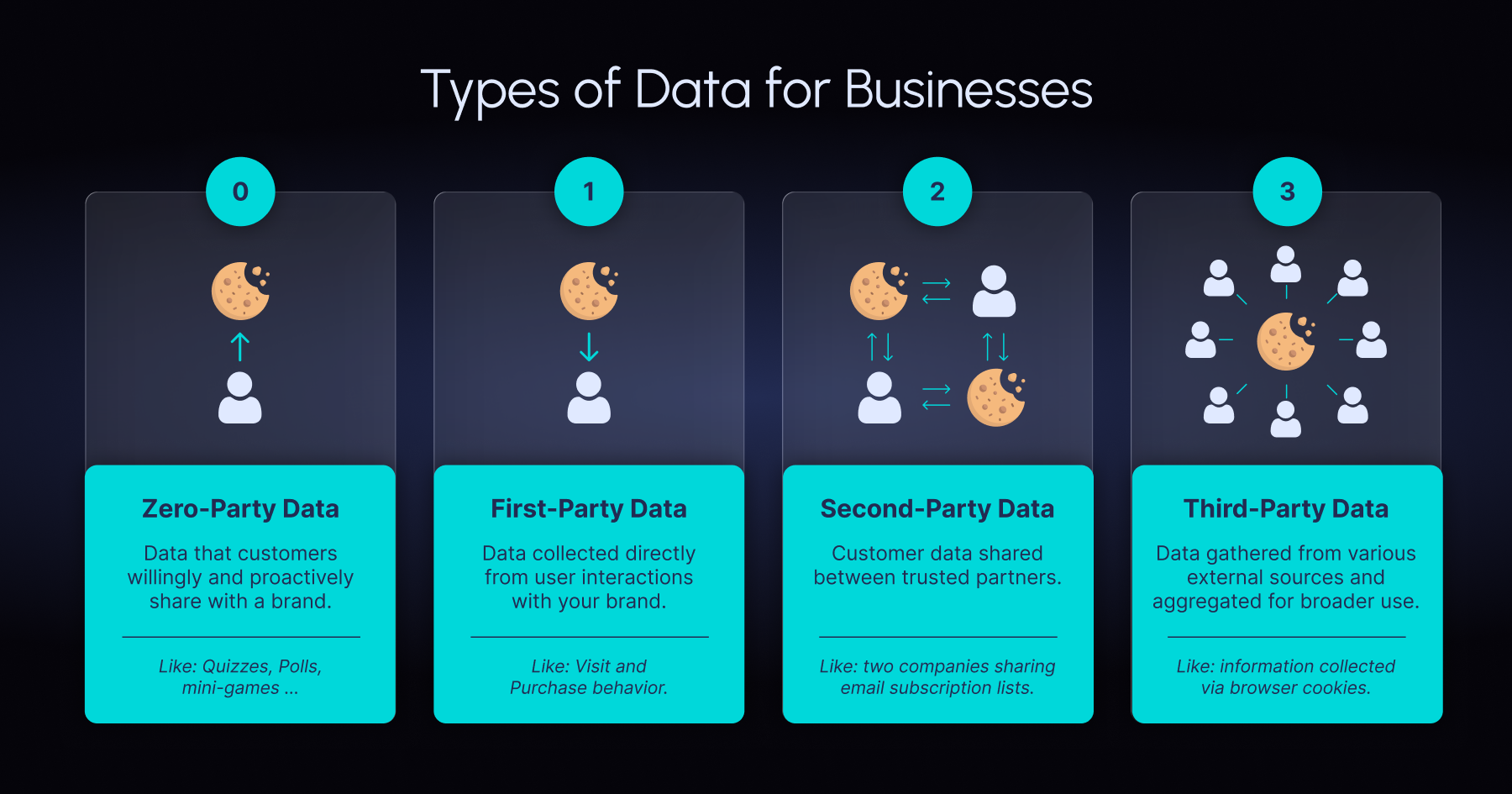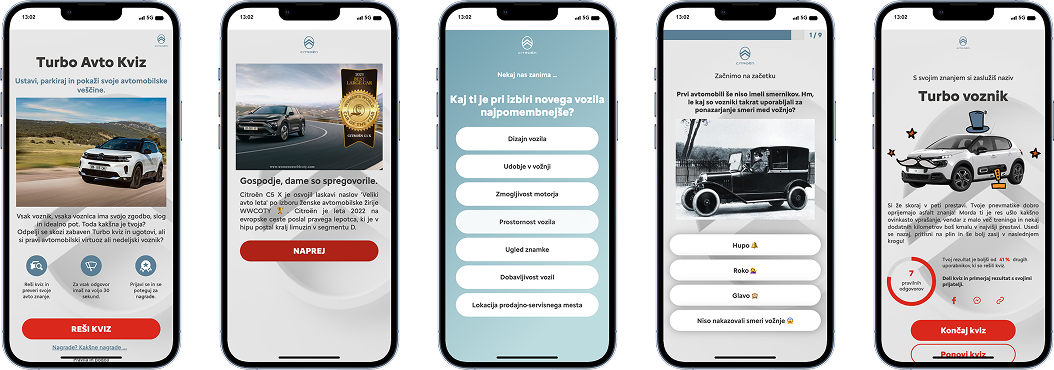Fill out the form below and our team will be with you in no time.
Need help?
Read mode

Data privacy stole the show these past few years.
Cookies faded, banners multiplied, and marketers everywhere felt the ground shift.
If you depend on outside trackers, it starts to feel like fishing in a lake that is being drained day by day.
So let’s talk about the four kinds of data on your tackle box and why the one you collect by simply asking — zero‑party data — now sits at the top.
Back in 2021, researcher Krzysztof Franaszek used his Adalytics tool to find out how accurate “targeted” ads really were.
The results?
Often hilariously off.
Users got pegged as “luxury car enthusiasts” with zero interest in high-end vehicles, or men’s footwear ads displayed to women.
Fast-forward to 2025, and not much has changed—unless you rely on data you collect and confirm yourself.
First-party data is what you gather directly on your site or app: clicks, time on page, and other user behaviors.
It’s reliable but limited to your own space.
Second-party data is basically someone else’s first-party data that you purchase.
It can enrich your user profiles but can get pricey.
Third-party data is aggregated from multiple websites, often anonymized.
It might give you a broad view, but it’s rented, not owned, and frequently inaccurate.
Zero-party data is the next evolution.
Instead of analyzing what someone did last week, you just ask them what they actually want.
Think of an online store clerk saying, “Looking for sneakers or boots?”
That’s zero-party data—volunteered directly by the user for a better experience.
It removes guesswork and fosters transparency, two things we’re all craving in 2025.

When a local retailer launched a string of playful quizzes, memory games and spin‑the‑wheel experiences, people played for almost four minutes and 28 % of them left their details.
The goal had been 20 %.
They smashed it by listening, not lurking.
A famous home appliances manufacturer used a nature‑themed quiz. Seventy‑two per cent of visitors played to the end and 96 % of them registered. That is almost everyone.
Those numbers are possible because the exchange feels fair. Users get fun, insight or a prize. Brands get precise answers instead of fuzzy inferences.
First-party data is typically inferred: how many pages they visited, or how long they stayed.
Zero-party data is explicitly shared.
People fill out a quick quiz or answer a short prompt, providing up-to-date preferences.
That sense of ownership and consent leads to better accuracy and stronger trust.
Instead of reverse-engineering their interests, you have them spelled out in black and white.

Recommendation quizzes work like a personal shopper: “What styles do you love?”
Simple surveys let users share direct answers about color, size, or style.
Interactive forms add a friendly Q&A vibe to your sign-up process.
Gamified quizzes entertain while asking targeted questions, so everyone wins.

If third-party cookies vanish tomorrow, you don’t panic if you’re using zero-party data.
You still know exactly what your customers want because they told you.
That translates to more relevant product recommendations, more engaging campaigns, and fewer wasted ad dollars.
Plus, it respects user privacy and builds trust—a vital edge in 2025’s consumer landscape.
Segmentation gets razor-sharp.
If someone self-identifies as a minimalist, you show them sleek, clean designs.
Another user says they love bright, bold styles?
They see your colorful lines first.
Your website or app can adapt instantly, and your email marketing becomes more than “Dear John”—it’s personalized in a real, meaningful way.
See interactive tools that can help you build Zero-party database
Zero-party data flips the script on old-school targeting.
Instead of mapping user footprints behind their backs, you open a friendly conversation.
The result is mutual respect: customers get more relevant deals, and you get data you can trust.
No more guesswork, no more weird ads about sports cars you never Googled.
In short, it’s a direct path to authentic personalization, built on shared trust.
Need a hand building quizzes, forms, or interactive experiences that collect zero-party data?
At brainylab, we create gamified solutions that merge user fun with brand insights—perfect for mastering zero-party data in the new era of marketing.